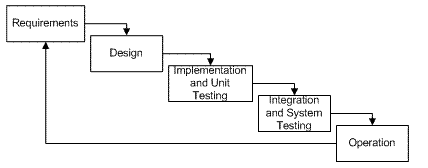The incremental model is an intuitive approach to the waterfall model. Multiple development cycles take place here, making the life cycle a “multi-waterfall” cycle. Cycles are divided up into smaller, more easily managed iterations. Each iteration passes through the requirements, design, implementation and testing phases.
A working version of software is produced during the first iteration, so you have working software early on during the software life cycle. Subsequent iterations build on the initial software produced during the first iteration.
Advantages
- Generates working software quickly and early during the software life cycle.
- More flexible – less costly to change scope and requirements.
- Easier to test and debug during a smaller iteration.
- Easier to manage risk because risky pieces are identified and handled during its iteration.
- Each iteration is an easily managed milestone.
Disadvantages
- Each phase of an iteration is rigid and do not overlap each other.
- Problems may arise pertaining to system architecture because not all requirements are gathered up front for the entire software life cycle.
Thanks
(Faisal Sikder)


